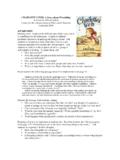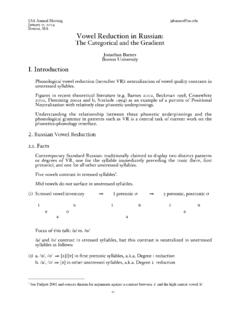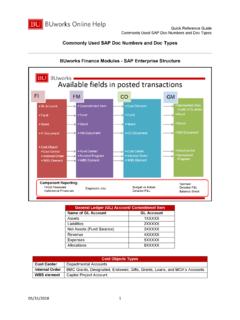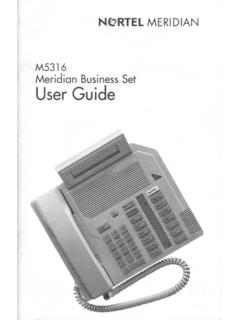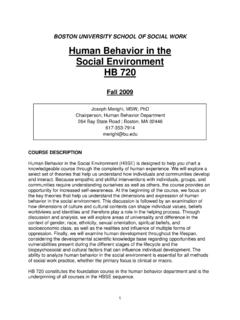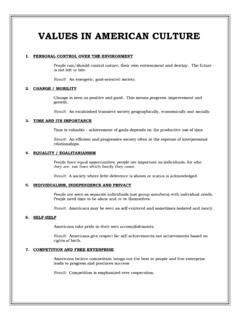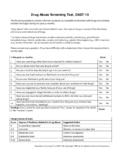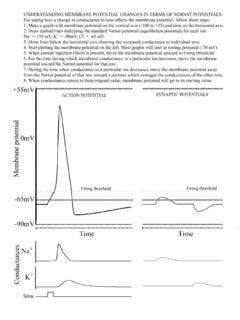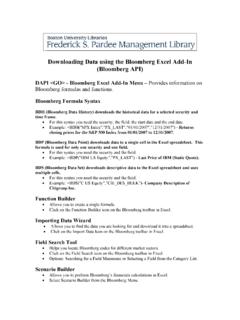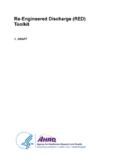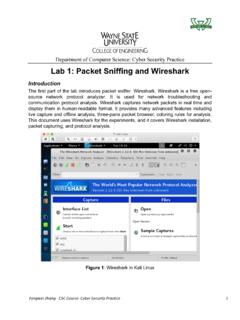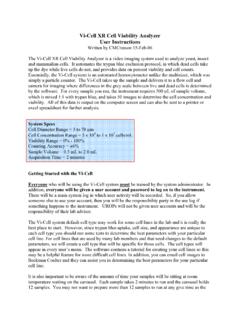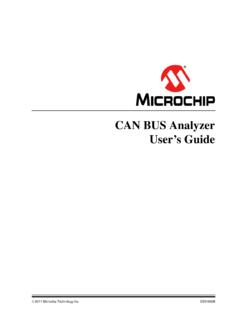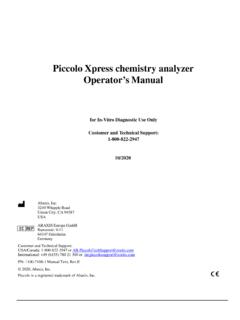Transcription of qPCR Quantification Protocol Guide - Boston University
1 ILLUMINA PROPRIETARYC atalog # SY-930-1010 Part # 11322363 Rev. ASeptember 2009qPCR Quantification Protocol GuideFOR RESEARCH USE ONLYTo p i c s3 Introduction5 User-Supplied Consumables and Equipment7 Select Control Template8 Dilute qpcr Control Template9 Dilute Libraries10 Prepare Reaction Mix11 Aliquot to 96-Well Plate12 Quantify by qPCR13 Analyze15 Appendix A - Determine Cluster Numbers for Control Library17 Appendix B - Sample Preparation for Cluster Generation19 Appendix C - Determine Relative GC Content of LibraryThis document and its contents are proprietary to Illumina, Inc. and its affiliates ( Illumina ), and are intended solely for the contractual use of its customers and for no other purpose than to use the product described herein. This document and its contents shall not be used or distributed for any other purpose and/or otherwise communicated, disclosed, or reproduced in any way whatsoever without the prior written consent of Illumina, the proper use of this product and/or all parts thereof, the instructions in this document must be strictly and explicitly followed by experienced personnel.
2 All of the contents of this document must be fully read and understood prior to using the product or any of the parts TO COMPLETELY READ AND FULLY UNDERSTAND AND FOLLOW ALL OF THE CONTENTS OF THIS DOCUMENT PRIOR TO USING THIS PRODUCT, OR PARTS THEREOF, MAY RESULT IN DAMAGE TO THE PRODUCT, OR PARTS THEREOF, AND INJURY TO ANY PERSONS USING THE AND LIMITATION OF LIABILITYThis document is provided as is, and Illumina assumes no responsibility for any typographical, technical or other inaccuracies in this document. Illumina reserves the right to periodically change information that is contained in this document and to make changes to the products, processes, or parts thereof described herein without does not assume any liability arising out of the application or the use of any products, component parts, or software described herein. Illumina does not convey any license under its patent, trademark, copyright, or common-law rights nor the similar rights of others. Illumina further reserves the right to make any changes in any processes, products, or parts thereof, described herein without notice.
3 While every effort has been made to make this document as complete and accurate as possible as of the publication date, no warranty of fitness is implied, nor does Illumina accept any liability for damages resulting from the information contained in this MAKES NO REPRESENTATIONS, WARRANTIES, CONDITIONS, OR COVENANTS, EITHER EXPRESS OR IMPLIED (INCLUDING WITHOUT LIMITATION ANY EXPRESS OR IMPLIED WARRANTIES OR CONDITIONS OF FITNESS FOR A PARTICULAR PURPOSE, NON-INFRINGEMENT, MERCHANTABILITY, DURABILITY, TITLE, OR RELATED TO THE PERFORMANCE OR NONPERFORMANCE OF ANY PRODUCT REFERENCED HEREIN OR PERFORMANCE OF ANY SERVICES REFERENCED HEREIN).This document may contain references to third-party sources of information, hardware or software, products or services, and/or third-party web sites (collectively the Third-Party Information ). Illumina does not control and is not responsible for any Third-Party Information, including, without limitation, the content, accuracy, copyright compliance, compatibility, performance, trustworthiness, legality, decency, links, or any other aspect of Third-Party Information.
4 Reference to or inclusion of Third-Party Information in this document does not imply endorsement by Illumina of the Third-Party Information or of the third party in any way. 2009 Illumina, Inc. All rights , illuminaDx, Solexa, Making Sense Out of Life, Oligator, Sentrix, GoldenGate, GoldenGate Indexing, DASL, BeadArray, Array of Arrays, Infinium, BeadXpress, VeraCode, IntelliHyb, iSelect, CSPro, and GenomeStudio are registered trademarks or trademarks of Illumina, Inc. All other brands and names contained herein are the property of their respective Quantification Protocol GuideIntroductionThis document describes a qpcr method for quantifying libraries generated using the Illumina sample preparation protocols. qpcr is a method of quantifying DNA based on PCR. qpcr tracks target concentration as a function of PCR cycle number in order to derive a quantitative estimate of the initial template concentration in a sample. As with conventional PCR, it uses a polymerase, dNTPs, and two primers designed to match sequences within a the purposes of this Protocol , the primers match sequences within the adapters flanking an Illumina sequencing library.
5 qpcr is, therefore, an ideal method for measuring libraries in advance of generating clusters, because it will only measure templates that have both adaptor sequences on either end which will subsequently form clusters on a flowcell. Moreover, qpcr is a very sensitive method of measuring DNA and thus dilute libraries with concentrations below the threshold of detection of conventional spectrophotometric methods are amenable to Quantification by are several different qpcr instruments available from instrument vendors, each with its own proprietary software for running experiments and analyzing data. It is beyond the scope of this document to describe protocols for all instruments and analysis packages. Instead, this document describes a Protocol designed around a Stratagene Mx3000P qpcr machine and Stratagene MxPro software. You will need to adapt this Protocol to your specific qpcr WorkflowFigure 1 illustrates the qpcr Quantification workflow. Dilute the control template and the libraries for Quantification to the pM range and run qpcr .
6 From the qpcr results, calculate the concentration of the quantified libraries and dilute them to a standard concentration ( , 2 nM). 4 Catalog # SY-930-1010 Part # 11322363 Rev. AFigure 1qPCR Quantification WorkflowNOTED uring qpcr setup, it is important to avoid DNA cross-contamination. Clean the set up area, including all equipment to be used, thoroughly with sodium hypochlorite (10% bleach). Illumina also recommends using a dedicated set of pipettes for qpcr to minimize accuracy of qpcr is highly dependent on accurate pipetting and thorough mixing of solutions. Take extra care to avoid pipetting errors during qpcr set up and when preparing templates for TemplateLog initial ConcentrationCtxxxLibraries forquantification+Dilute control template andlibraries for quantificationto pM rangeRun qpcr and generate CtvaluesPlot standard curve andread off concentrations ofquantified librariesControl TemplateLog initial ConcentrationCtxxxLibraries forquantification+Dilute control template andlibraries for quantificationto pM rangeRun qpcr and generate CtvaluesPlot standard curve andread off concentrations ofquantified librariesControl TemplateControl TemplateLog initial ConcentrationCtxxxLibraries forquantification+Libraries forquantification+Dilute control template andlibraries for quantificationto pM rangeRun qpcr and generate CtvaluesPlot standard curve andread off concentrations ofquantified libraries5qPCR Quantification Protocol GuideUser-Supplied Consumables and EquipmentCheck to ensure that you have all of the necessary
7 User-supplied consumables and equipment before b l e 1 User-Supplied NaOHGeneral lab sodium hypochlorite (10% bleach)General lab Tween 20 General lab supplier96-well platesStratagene, part # 410088 Control template (10 nM)General lab supplierHybridization bufferIllumina, part # 1000166 KAPA SYBR FAST Master Mix Universal 2X qpcr Master Mix (2 x 5 ml =10 ml)Kapa Biosystems, part #KK4602 Libraries to be quantified diluted to approximately 10 nM General lab supplierOptical strip capsStratagene, part # 401425 Pipettes (P2, P10, P200, P1000, and an 8 channel multichannel dispensing 18 l)General lab supplierQIAGEN EB 250 ml elution bufferQIAGEN, part # 19086qPCR primer : 5' AATGATACGGCGACCACCGAGAT 3' HPLC purifiedGeneral lab supplierqPCR primer : 5' CAAGCAGAAGACGGCATACGA 3' HPLC purifiedGeneral lab supplierOne or more of the following kits in order to correspond to the number of libraries to be Cluster Generation Kit (1 flow cell) Cluster Generation Kit (10 flow cells) Cluster Generation Kit (1 flow cell) Cluster Generation Kit (5 flow cells) , part # , part # , part # , part # PE-2003-40056 Catalog # SY-930-1010 Part # 11322363 Rev.
8 ATa b l e 2 Equipment ChecklistEquipmentSuggested SupplierBenchtop centrifuge with swing out rotorSorvall Legend RTBenchtop microcentrifugeGeneral lab supplierGenome AnalyzerIllumina, part # SY-301-1301qPCR machineStratagene Mx3000 PVortexerGeneral lab supplier7qPCR Quantification Protocol GuideSelect Control TemplateBefore starting qpcr , select the control template against which the libraries for Quantification can be principle, any library prepared for sequencing on the Illumina platform can be used as a control for qpcr and you may wish to tailor a control template to suit your specific needs. The control template should be as similar as possible in terms of template size, GC content and library type ( , genomic, CHIP-seq, etc.) to the libraries for Quantification . It is also important to note that the control template needs to be available in sufficient quantity, as specified in this Protocol , for it to be used in multiple qpcr order to correlate library concentration with cluster number, it is recommended to generate a titration flowcell for the control template (see Appendix A - Determine Cluster Numbers for Control Library and Appendix B - Sample Preparation for Cluster Generation).
9 The GC content of a given library is not always known and this poses a problem for matching the library to an appropriate control template for qpcr Quantification . However, it is possible to estimate the GC content of Illumina libraries relative to other Illumina libraries of the same template size by performing a limited number of cycles of qpcr followed by a dissociation curve. The higher the GC content of the library, the higher the melting temperature of the PCR product (see Appendix C - Determine Relative GC Content of Library). Once the GC content of a library is known, an appropriate control template can be selected for qpcr # SY-930-1010 Part # 11322363 Rev. ADilute qpcr Control TemplateUse the appropriate control library for the libraries you wish to ` qpcr control template (10 nM)` Tween 20 stored at room temperature ( , 50 ml water + 50 l Tween 20) 198 l of the Tween 20 to 2 l of the qpcr control template to make a 100-fold the dilution to thoroughly mix the 100 l of the Tween 20 to 100 l of the diluted template to make a titration curve of six 2x serial dilutions.
10 This will give 7 control template dilutions in the range of 100 the dilution to thoroughly mix the steps 1 through 4 to produce 3 independent serial dilutions of the control recommends using a control library that gives a good range of cluster numbers when clustered between 2 20 the qpcr 10 nM library template in small aliquots to avoid multiple freeze and thaw is important to make fresh dilutions of the qpcr control template immediately before qpcr as the DNA does not store well at low dilutions are diluted a further 10X into the final SYBR mix, so the final concentration in the qpcr is 10 Quantification Protocol GuideDilute LibrariesThe libraries for Quantification need to be diluted to the same range as the control template for `Libraries for Quantification diluted to approximately 10 nM in QIAGEN EB Buffer` Tween 20 stored at room temperature ( , 50 ml water + 50 l Tween 20) 998 l of the Tween 20 to 2 l of the unknown library template to make a 500-fold dilution.
